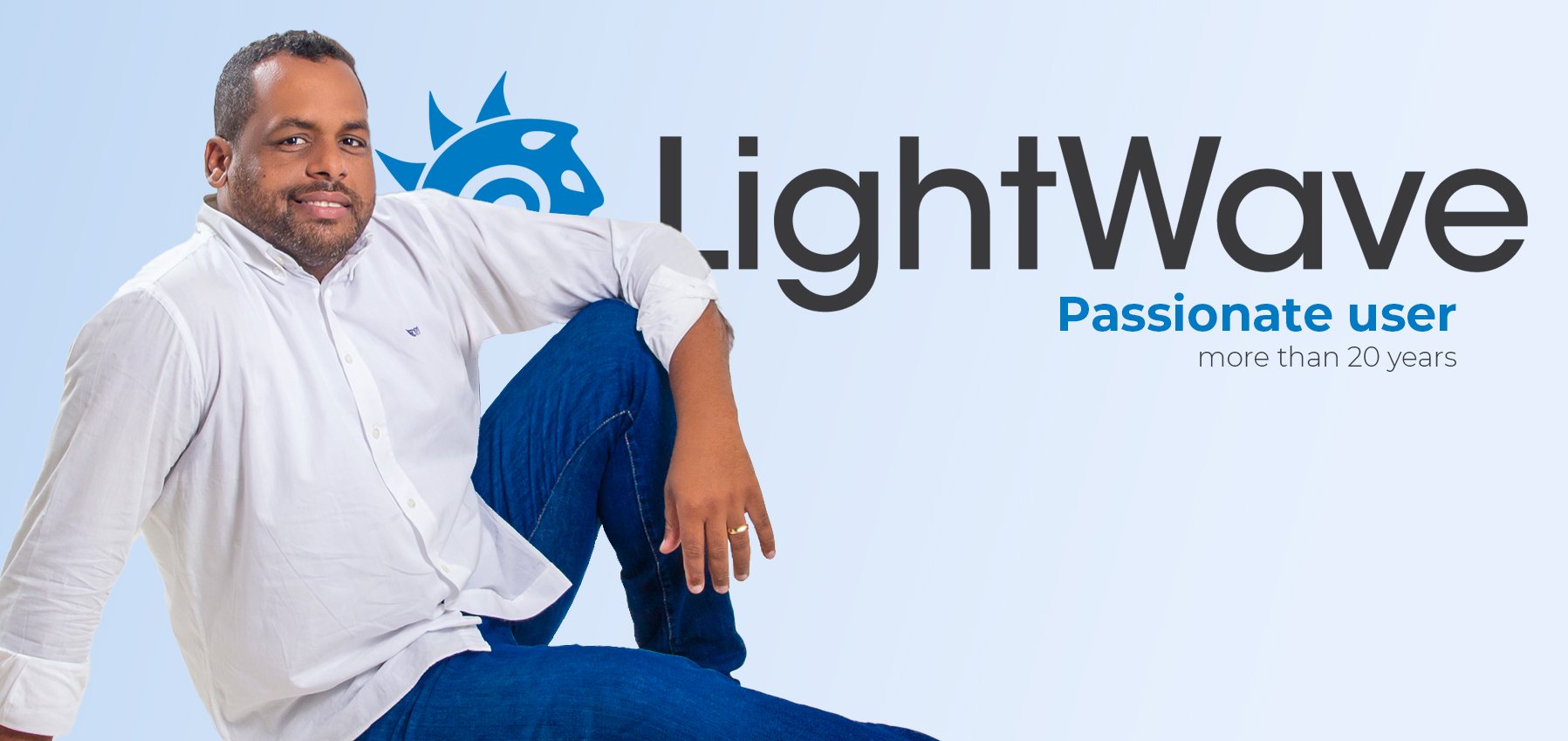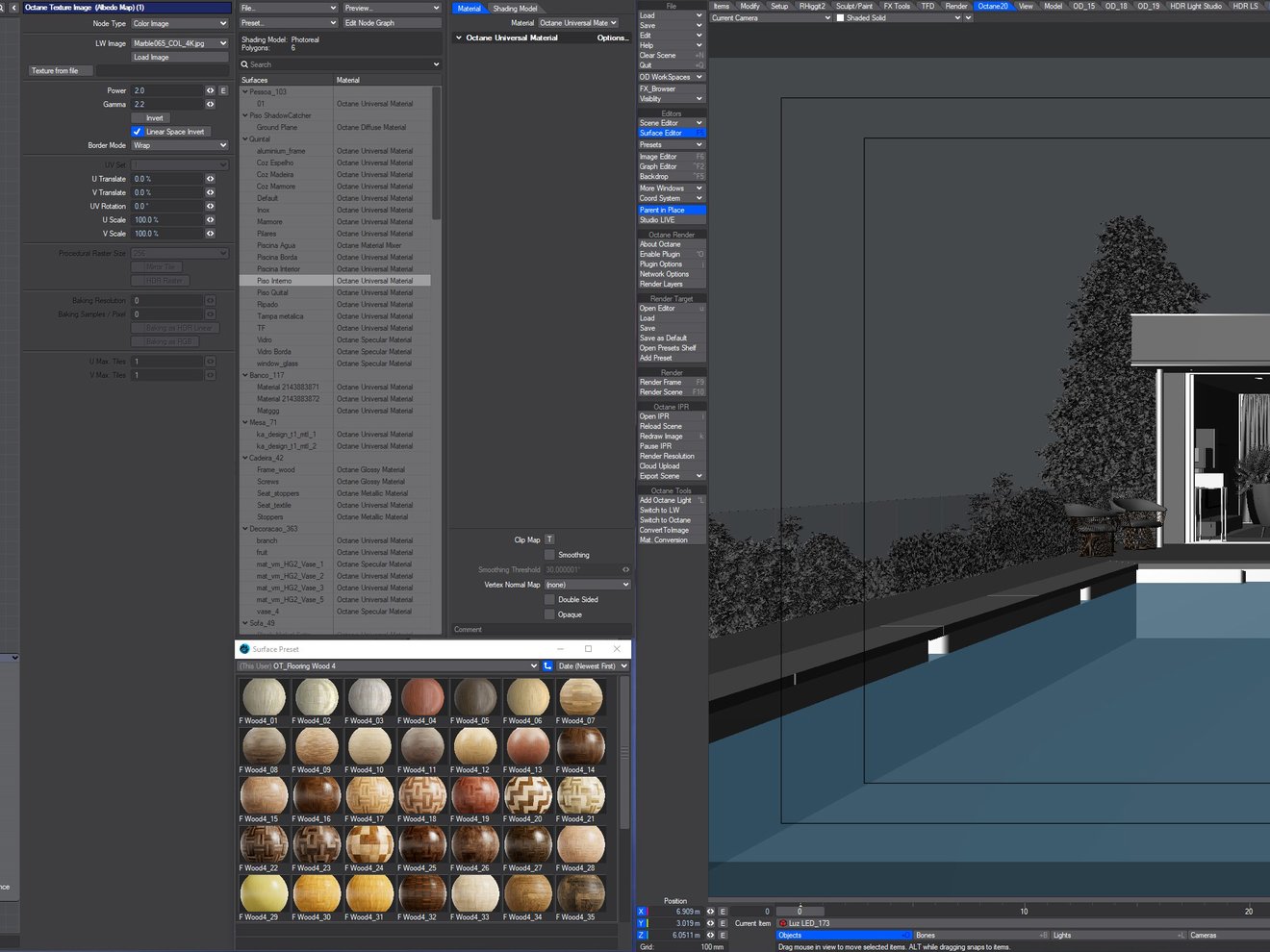
Artist focus - Carllos Calldeira
3D Artes
Hi Carllos, tell us a bit about yourself.
Hello, I'm Carllos Calldeira, Angola-born in 1980 and living in Luanda. I've been a computer graphics designer since 1999, creating audiovisual content, video post-production, animation, motion design and architectural models.
I try to improve my skills every day, just like all creatives. I work hard to achieve my goals, whether dictated by myself or my clients.
My spirit has always been to innovate, always trying to follow the creative market as far as possible, constantly researching new technologies, trends and techniques to obtain the necessary basis to help my team and partners turn their creative vision into reality.
How did you get started as a graphics designer?
In reality, I've been a designer practically since I was born. When I was very young, I always liked to draw. As I grew up, I started to develop my own work - I created comic books with stories using local ideas. At the time there were no computers and everything was done by hand.
Back in the 90s, there was little information about technology in the small town where I was born. In 1998, I decided to move to a bigger city where there was much more information about what I wanted to do. That's when I had my first experience with a desktop computer: Windows 98! It was crazy - and love at first sight.
So I started drawing and exploring the world of computers, but I knew nothing about computer graphics, and that's when I met a young man who in turn would become a great friend of mine, Benvindo Rafael. I was already drawing digitally using Windows Paint; I thought it was the best tool in the universe. One day, Benvindo Rafael introduced me to Photoshop and I just fell over,
From that day on, I never stopped studying computer graphics. Between 2000 and 2002, I started working as a trainee at computer graphics studio Oscar Gil Produções. As the studio won the most awards in television and film in Angola, it was a great school for me. I worked there for about 10 years and started interacting with the true masters of the field from whom I learned a lot, a lot and a lot!
Is there anyone in particular, or other software, that has helped you become the artist you are now?
Thanks to my great friend and mentor Celso Paulo, who at the time taught me how to use After Affects and much more.
A year later, I wanted to learn much more, so I started studying 3D Studio Max. I was already modelling and animating characters and I was fascinated by what I was experiencing. Benvindo Rafael popped up once again and introduced me to LightWave3D, then at version 6.5, claiming that it offered a much shorter learning curve than 3D Studio Max. He was convincing in his presentation, and I can only say that seeing LightWave was love at first sight.
From then on, we studied LightWave3D together for endless hours, and I became familiar with the program. Over the years, LightWave 3D lost ground to its competitors; so we decided to study Maya and Softimage. I got together with colleagues from different animation and VFX studios and created a study group to learn them.
That's when Luxology was born, launching Modo. At the time I said goodbye to LightWave3D, because it seemed that Modo offered the perfect pipeline, with techniques and tools similar to the apps I loved and mastered the most - LightWave 3D and Photoshop. For a long time, I stayed away from LightWave 3D while I became familiar with Modo, but then some strange magnetic force pulled me back home. Modo didn't suit me when it came to character animation - it offered wonderful and modern tools but LigthWave 3D still had something very special that Modo didn't, the magic of animating characters and its flexibility. Maybe that's my point of view, but I decided to stick to what I was most comfortable with.
After a few months, I felt I only had a head for LightWave 3D, it was the pipeline that made me feel most comfortable, even with its limitations. It offered the best workflow for me. A few years later, I also studied Cinema4D, but without success. Then, 15 years later I decided to try Blender version 2.8 was released. Blender appeared to be an app behind the shadows - by a stroke of magic, it exploded onto the scene and the whole world was open-mouthed and mesmerized. So, I started studying Blender and now feel comfortable using it, but LightWave 3D continues to work its spell, so I still use LightWave 3D as my main 3D creation tool.
How many people work at your 3Artes studio?
At 3Artes, there are four of us and the main 3D tool is LightWave 3D.
Who or what are your biggest influences and inspirations in your work?
I've always been inspired by many artists who use LightWave 3D, the list is huge! I can name a few of them here: William Vaughan, as the first on my list; Benvindo Rafael; Lino Grandi; Rene "LW Guru" Falk Thomasius; Mauro Corveloni; Simon Smalley; Adrian Kulawik; DJ Waterman; Alex Hartley; Marjan Moghaddam; Roy Tarot; Márcio Vigário; Alper Ocak, Peter Kray; David Aguero; Louis du Mont; Deuce Bennett; Augusto Martins; Mark Warner; RebelHill, Andrew Comb; Lukasz Pazera by ACS, etc, etc. I know I've forgotten many more artists, apologies for that.
In among all your photorealistic work, I really like the cartoon school. What was that project for?
It was a project that I unfortunately lost a few years ago because of a hard disk burnout. It was a short animated video about school management software.
What advice would you give to someone who wants to get into 3D animation as a job?
To this day I continue to train people interested in learning 3D animation, so the advice I give remains the same as always. Yes, 3D animation is a good way of working, it has a place in various aspects or areas of the creative market, so I think that applied well it's an area with a lot to offer future artists who intend to follow it.
True love![Benvindo Rafael] was convincing in his presentation, and I can only say that seeing LightWave was love at first sight.
Carllos Calldeira, 3D Artes
What are your favorite LightWave 3D features and how do they enhance your work?
Native to LightWave, there are many features that I love, but most of my favourite features are from third parties. The first of these is LWCad, because I work a lot more in ArchViz these days, the second is Octane and for the same reason, it's a renderer that combines speed and realism in a very powerful renderer.
Then there are the 3rd Powers tools, which offer modelling, sculpting, topology, modifiers, weighting and weight painting tools, which are simply extraordinary. The OD Tools package also offers fabulous tools, which fortunately are now part of LightWave3D, and I hope they become native tools with full interaction with the software and not just external scripts.
As I said, LightWave 3D offers many extraordinary tools, that's why I use it. I would like to see LightWave 3D do non-destructive modelling in Modeler. If that's not possible, then add tools or modifiers to Layout that can perform this role, modifiers - such as Mirror, Array, Solidify, Remesh, Curve, Lattice, Bevel, Boolean, Bend, Twist - that do not need nulls to work.
As for Layout, one of the things I'm very proud of is the fantastic way the resources interact with the rendering engine. it's just a shame that the native rendering engine after LightWave3D 11 became a super lens renderer which made me opt for Octane Render, but I still like the way the native renderer works better, I think it just needs more attention and care.
Over your time in 3D graphics, you've used a lot of applications. What keeps you coming back?
What motivated me to use LightWave3D was an easy learning curve coupled with a good workflow and pipeline, which pushed me to master the software.
Currently, LightWave3D has a long way to go because the 3D market is not the same as it was 20 years ago. The competition has many competing tools that are powerful and sometimes free. LightWave needs to be very innovative to stand out from the others, but I believe better days will come for LightWave 3D. As a fan, I'm optimistic and believe it will attract positive things for LightWave 3D.
Contact Carllos:
3artes.estudios@gmail.com
3Artes Studio.
www.behance.net/CarllosCallderia














